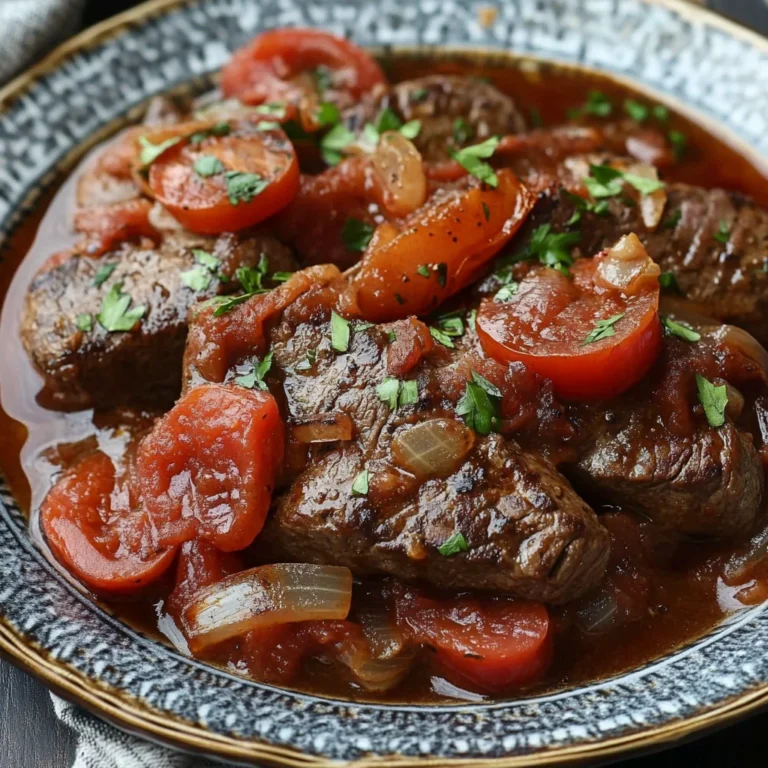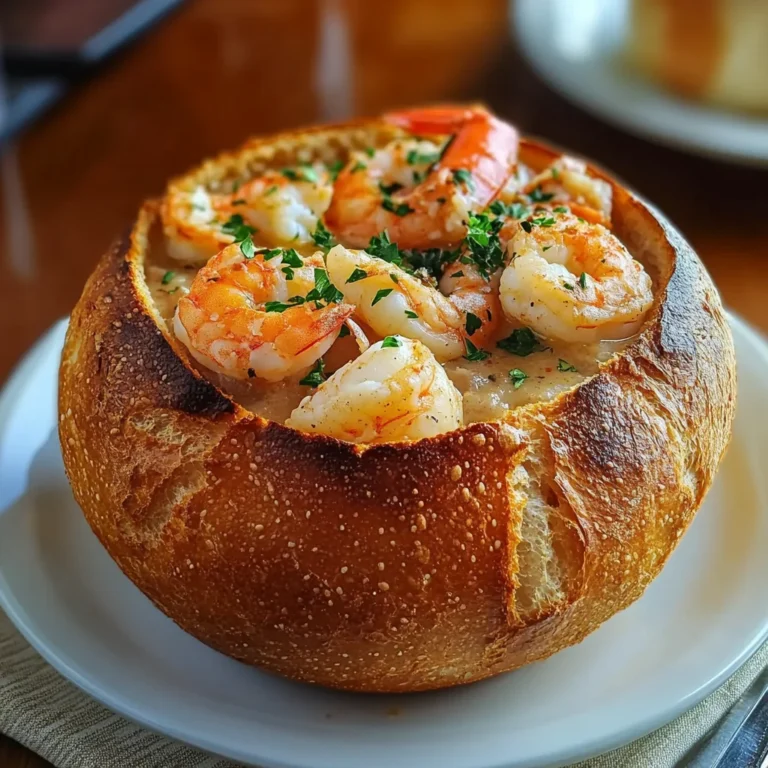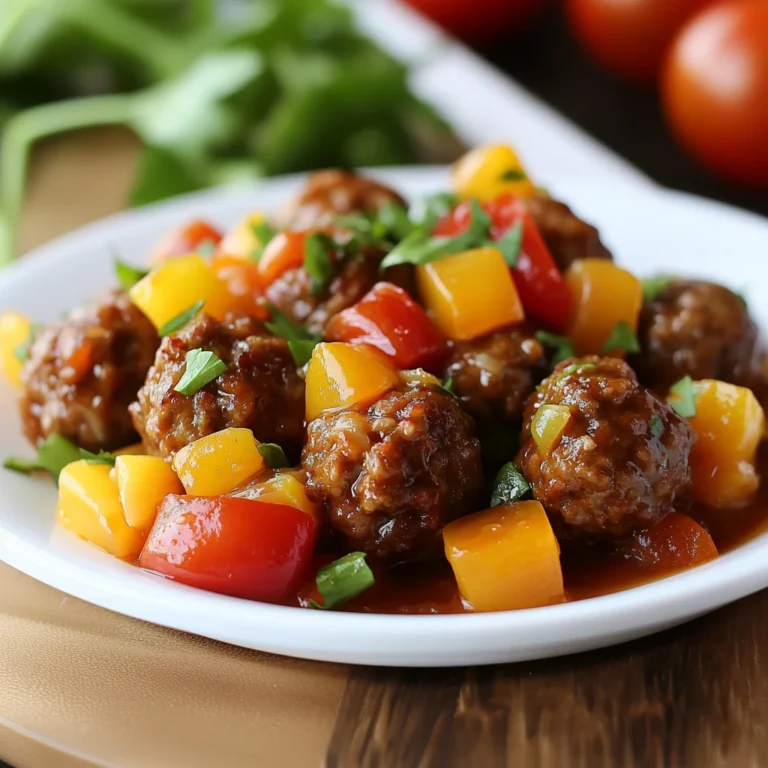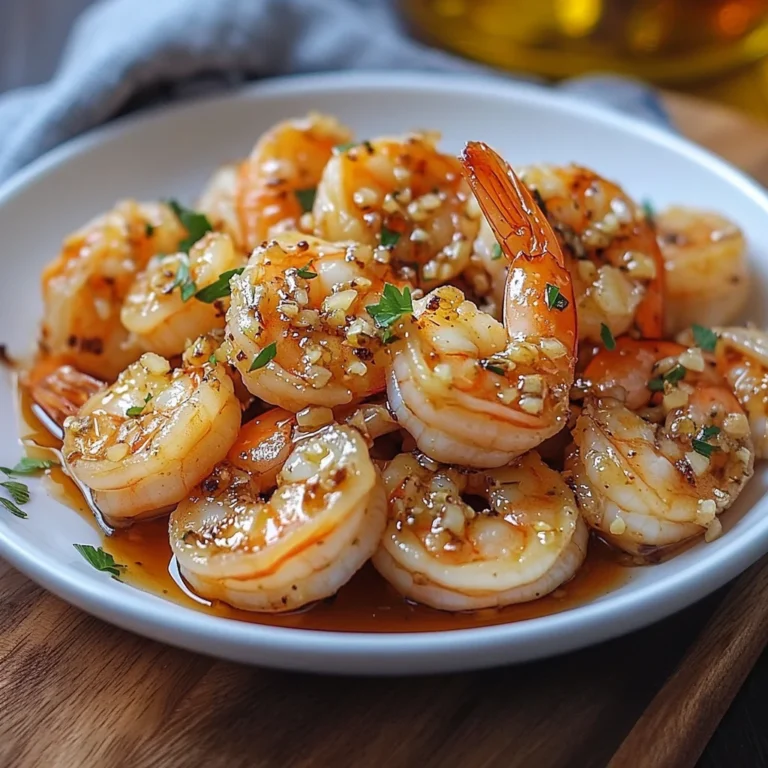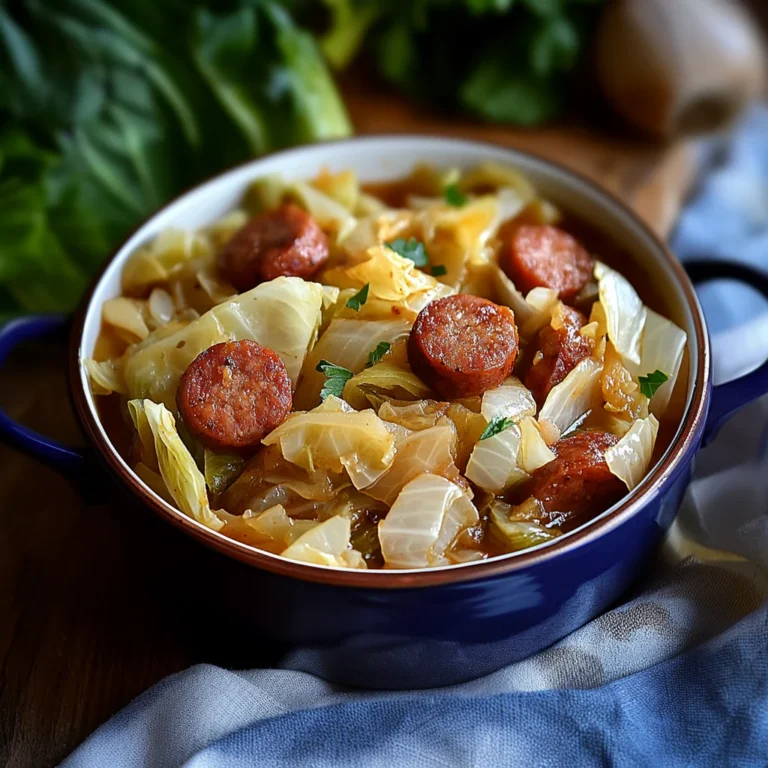Japanese Katsu Bowls with Lamb and Tonkatsu Sauce
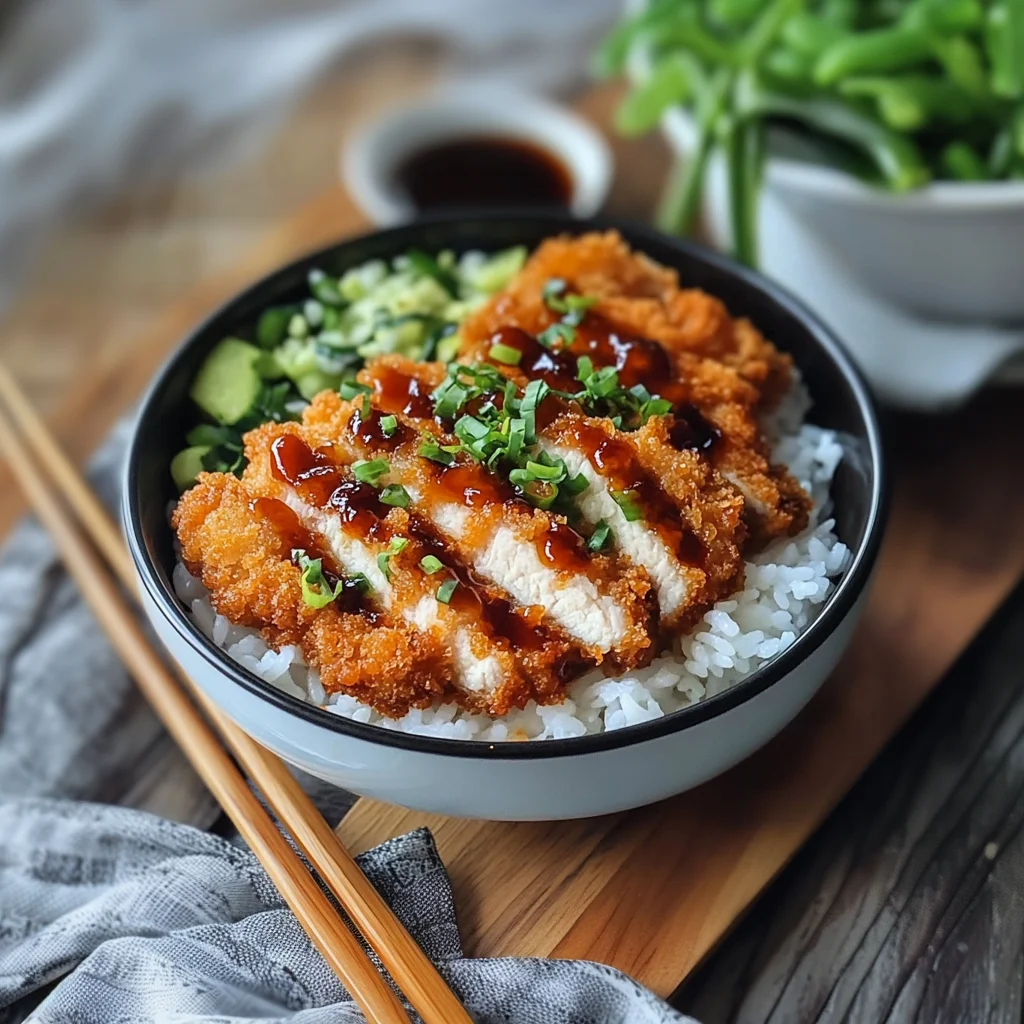
Description of this Recipe:
These Japanese Katsu Bowls feature tender lamb cutlets coated in crispy panko breadcrumbs, served over a bed of fluffy rice and refreshing shredded cabbage. Drizzled with a homemade tonkatsu sauce that perfectly balances sweet, savory, and tangy flavors, this dish is a delightful culinary experience that combines textures and tastes harmoniously. It’s an easy-to-make, satisfying meal that brings a touch of Japanese comfort food to your table.
Why You’ll Love This Recipe:
You’ll love this recipe because it’s a fantastic twist on the classic tonkatsu, using tender lamb for a richer flavor. The homemade tonkatsu sauce is incredibly easy to make with pantry staples, and it ties all the components together beautifully. The combination of crispy katsu, fluffy rice, fresh cabbage, and savory sauce is simply irresistible. Plus, it’s quick enough for a weeknight dinner yet impressive enough to serve to guests.
Introduction:
Katsu bowls are a beloved Japanese dish that typically consists of a breaded and fried cutlet (katsu) served over rice, often accompanied by shredded cabbage and a flavorful sauce. While pork is the most common choice for katsu (tonkatsu), this recipe introduces a delightful variation using lamb. Lamb offers a unique richness and tenderness that elevates the dish to a new level.
The key to a great katsu bowl lies in the perfect balance of textures and flavors. The crispy, golden-brown katsu provides a satisfying crunch, while the warm, fluffy rice and refreshing shredded cabbage offer a comforting contrast. The homemade tonkatsu sauce is the star of the show, bringing a symphony of sweet, savory, and tangy notes that enhance every bite.
This recipe is designed to be accessible and easy to follow, even for novice cooks. With simple ingredients and straightforward instructions, you can create a restaurant-quality katsu bowl in the comfort of your own kitchen. Whether you’re looking for a quick weeknight dinner or a special weekend treat, these Japanese Katsu Bowls with Lamb and Tonkatsu Sauce are sure to impress.
Ingredients:
For the Katsu:
- 2 boneless lamb cutlets (about 4-6 ounces each)
- ½ teaspoon salt
- ¼ teaspoon black pepper
- ½ cup all-purpose flour
- 1 large egg, beaten
- 1 cup panko breadcrumbs
- ¼ cup vegetable oil (for frying)
For the Tonkatsu Sauce:
- ¼ cup ketchup
- 2 tablespoons Worcestershire sauce
- 1 tablespoon soy sauce
- 1 tablespoon oyster sauce
- 1 teaspoon Dijon mustard
- 1 teaspoon honey
For Serving:
- 2 cups cooked white rice (such as jasmine or sushi rice)
- 1 cup shredded cabbage (green or purple)
- 2 green onions, thinly sliced
- 1 teaspoon sesame seeds

Prep:
Step 1: Prepare the Lamb Cutlets
Begin by seasoning the lamb cutlets generously with salt and black pepper on both sides. This step is crucial for enhancing the natural flavors of the lamb and ensuring that each bite is well-seasoned. Lightly pound the lamb cutlets with a meat mallet or rolling pin to tenderize them and ensure even cooking. This will also help them maintain a uniform thickness, resulting in a more consistent texture when fried.
Step 2: Set Up the Breading Station
Prepare your breading station by arranging three shallow bowls in a row. In the first bowl, place the all-purpose flour. In the second bowl, whisk the egg until it is lightly beaten. In the third bowl, pour the panko breadcrumbs. Make sure each bowl is wide enough to easily accommodate the lamb cutlets. The key to a perfect breading is to ensure each cutlet is evenly coated in each layer.
Step 3: Bread the Lamb Cutlets
Coat each lamb cutlet in the flour, making sure to shake off any excess. The flour acts as a binding agent, helping the egg adhere to the meat. Next, dip the floured cutlet into the beaten egg, ensuring it is fully coated. Allow any excess egg to drip off before moving on to the final step. Finally, press the cutlet firmly into the panko breadcrumbs, ensuring the entire surface is covered. The panko breadcrumbs are essential for achieving that signature crispy texture. Gently press the breadcrumbs onto the cutlet to help them adhere.
Step 4: Fry the Katsu
Heat the vegetable oil in a large skillet over medium heat. The oil should be hot enough to sizzle when a breadcrumb is dropped into it, but not so hot that it burns the panko. Carefully place the breaded lamb cutlets into the hot oil, being careful not to overcrowd the pan. Fry for about 3-4 minutes per side, or until the cutlets are golden brown and crispy. Use tongs to gently flip the cutlets, and monitor the heat to prevent burning.
Step 5: Drain and Cool the Katsu
Once the katsu is cooked to perfection, carefully remove the cutlets from the skillet using tongs and place them on a plate lined with paper towels. The paper towels will absorb any excess oil, helping the katsu remain crispy. Allow the katsu to cool slightly before slicing and serving.
Step 6: Prepare the Tonkatsu Sauce
While the katsu is frying, prepare the tonkatsu sauce. In a small bowl, whisk together the ketchup, Worcestershire sauce, soy sauce, oyster sauce, Dijon mustard, and honey. Stir until all the ingredients are well combined and the sauce is smooth. Taste and adjust the sweetness or tanginess to your preference by adding a touch more honey or Dijon mustard.
Step 7: Assemble the Katsu Bowls
To assemble the katsu bowls, start with a base of warm white rice in each bowl. Fluff the rice with a fork to prevent clumping. Arrange a generous portion of shredded cabbage on one side of the bowl. The cabbage adds a refreshing crunch and complements the richness of the katsu. Slice the katsu into strips or bite-sized pieces and place it on top of the rice.
Step 8: Drizzle with Sauce and Garnish
Generously drizzle the homemade tonkatsu sauce over the katsu. Be sure to coat each piece, allowing the flavors to meld together. Garnish with thinly sliced green onions and sesame seeds for an extra pop of flavor and visual appeal. Serve immediately and enjoy the delightful combination of textures and tastes.
COOK Rating:
5/5 Stars
Serving Suggestions:
- Serve with a side of miso soup for a complete Japanese meal.
- Add a soft-boiled egg on top for extra richness.
- Offer a variety of condiments, such as Japanese mayonnaise or sriracha, for added flavor.
Tips:
- For extra crispy katsu, double-dip the lamb cutlets in the egg and panko breadcrumbs.
- Make sure the oil is hot enough before frying to prevent the katsu from becoming soggy.
- Prepare the tonkatsu sauce in advance to allow the flavors to meld together.
- Use sushi rice for a stickier texture that holds the sauce well.
- Adjust the amount of tonkatsu sauce to your preference.
Prep Time:
20 minutes
Cook Time:
20 minutes
Total Time:
40 minutes
Nutrition Information:
(Approximate values per serving)
Calories:
650
Protein:
35g
Sodium:
800mg
Conclusion:
These Japanese Katsu Bowls with Lamb and Tonkatsu Sauce are a delicious and satisfying meal that’s perfect for any occasion. The combination of crispy lamb katsu, fluffy rice, refreshing cabbage, and flavorful tonkatsu sauce is simply irresistible. With easy-to-follow instructions and simple ingredients, you can create a restaurant-quality dish in your own kitchen. Enjoy the perfect balance of textures and tastes that makes this katsu bowl a true culinary delight. Whether you’re a fan of Japanese cuisine or simply looking for a new and exciting recipe, this dish is sure to become a favorite.
Write 5 questions and answers about this recipe.
Question 1: Can I use pork instead of lamb for the katsu?
Answer: Absolutely! While this recipe features lamb for a unique twist, you can definitely use pork cutlets instead. Pork is the traditional meat used for tonkatsu, so it will still be a delicious and authentic option. Just make sure to adjust the cooking time as needed to ensure the pork is cooked through.
Question 2: Can I make the tonkatsu sauce ahead of time?
Answer: Yes, you can! In fact, making the tonkatsu sauce ahead of time is a great idea. The flavors will meld together and deepen over time, resulting in an even more delicious sauce. You can store the sauce in an airtight container in the refrigerator for up to a week. Just give it a good stir before using.
Question 3: What kind of rice is best for katsu bowls?
Answer: While you can use any type of white rice for katsu bowls, sushi rice or jasmine rice are particularly good choices. Sushi rice has a stickier texture that helps it hold the sauce well, while jasmine rice has a fragrant aroma and slightly sweet flavor that complements the other ingredients. Fluff the rice with a fork before serving to prevent clumping.
Question 4: Can I bake the katsu instead of frying it?
Answer: Yes, you can bake the katsu for a healthier alternative to frying. Preheat your oven to 400°F (200°C) and place the breaded lamb cutlets on a baking sheet lined with parchment paper. Drizzle a little oil over the cutlets to help them brown. Bake for about 15-20 minutes, or until golden brown and cooked through, flipping halfway through. While baking won’t achieve the exact same crispy texture as frying, it’s still a delicious and healthier option.
Question 5: What can I substitute for oyster sauce in the tonkatsu sauce?
Answer: If you don’t have oyster sauce on hand or prefer not to use it, you can substitute it with hoisin sauce or a combination of soy sauce and a touch of brown sugar. Hoisin sauce has a similar sweet and savory flavor profile to oyster sauce, while the soy sauce and brown sugar combination will provide a comparable umami and sweetness. Adjust the amounts to your taste preferences.
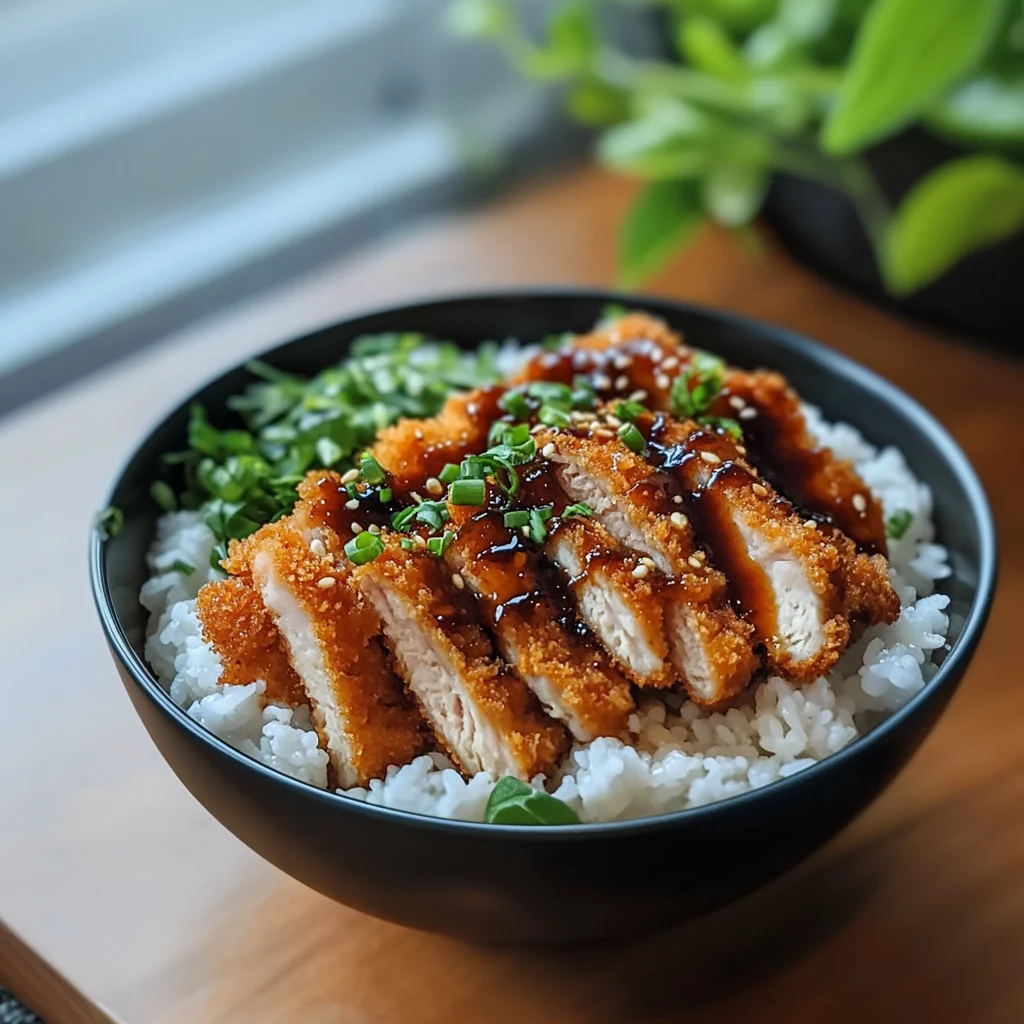
Japanese Katsu Bowls with Lamb and Tonkatsu Sauce
Ingredients
Method
- Step 1: Prepare the Lamb Cutlets
- Begin by seasoning the lamb cutlets generously with salt and black pepper on both sides. This step is crucial for enhancing the natural flavors of the lamb and ensuring that each bite is well-seasoned. Lightly pound the lamb cutlets with a meat mallet or rolling pin to tenderize them and ensure even cooking. This will also help them maintain a uniform thickness, resulting in a more consistent texture when fried.
- Step 2: Set Up the Breading Station
- Prepare your breading station by arranging three shallow bowls in a row. In the first bowl, place the all-purpose flour. In the second bowl, whisk the egg until it is lightly beaten. In the third bowl, pour the panko breadcrumbs. Make sure each bowl is wide enough to easily accommodate the lamb cutlets. The key to a perfect breading is to ensure each cutlet is evenly coated in each layer.
- Step 3: Bread the Lamb Cutlets
- Coat each lamb cutlet in the flour, making sure to shake off any excess. The flour acts as a binding agent, helping the egg adhere to the meat. Next, dip the floured cutlet into the beaten egg, ensuring it is fully coated. Allow any excess egg to drip off before moving on to the final step. Finally, press the cutlet firmly into the panko breadcrumbs, ensuring the entire surface is covered. The panko breadcrumbs are essential for achieving that signature crispy texture. Gently press the breadcrumbs onto the cutlet to help them adhere.
- Step 4: Fry the Katsu
- Heat the vegetable oil in a large skillet over medium heat. The oil should be hot enough to sizzle when a breadcrumb is dropped into it, but not so hot that it burns the panko. Carefully place the breaded lamb cutlets into the hot oil, being careful not to overcrowd the pan. Fry for about 3-4 minutes per side, or until the cutlets are golden brown and crispy. Use tongs to gently flip the cutlets, and monitor the heat to prevent burning.
- Step 5: Drain and Cool the Katsu
- Once the katsu is cooked to perfection, carefully remove the cutlets from the skillet using tongs and place them on a plate lined with paper towels. The paper towels will absorb any excess oil, helping the katsu remain crispy. Allow the katsu to cool slightly before slicing and serving.
- Step 6: Prepare the Tonkatsu Sauce
- While the katsu is frying, prepare the tonkatsu sauce. In a small bowl, whisk together the ketchup, Worcestershire sauce, soy sauce, oyster sauce, Dijon mustard, and honey. Stir until all the ingredients are well combined and the sauce is smooth. Taste and adjust the sweetness or tanginess to your preference by adding a touch more honey or Dijon mustard.
- Step 7: Assemble the Katsu Bowls
- To assemble the katsu bowls, start with a base of warm white rice in each bowl. Fluff the rice with a fork to prevent clumping. Arrange a generous portion of shredded cabbage on one side of the bowl. The cabbage adds a refreshing crunch and complements the richness of the katsu. Slice the katsu into strips or bite-sized pieces and place it on top of the rice.
- Step 8: Drizzle with Sauce and Garnish
- Generously drizzle the homemade tonkatsu sauce over the katsu. Be sure to coat each piece, allowing the flavors to meld together. Garnish with thinly sliced green onions and sesame seeds for an extra pop of flavor and visual appeal. Serve immediately and enjoy the delightful combination of textures and tastes.

